From canada.ca link to post by Canadian Senate, July 19th 2019
In a June 2018 letter addressed to the Chair and Deputy Chair of the Standing Senate Committee on Aboriginal Peoples, the Minister of Health and the Minister of Indigenous Services committed to providing Parliament with a report on priority areas identified during the Committee’s study of the Cannabis Act, within twelve months of Bill C-45 (the Cannabis Act) receiving Royal Assent. The report was to be in addition to the Government Response to the Eleventh Report of the Standing Senate Committee on Aboriginal Peoples entitled “The Subject Matter of Bill C-45: An Act Respecting Cannabis and to Amend the Controlled Drugs and Substances Act, the Criminal Code and Other Acts,” developed at the Committee’s request and tabled on September 28, 2018. In accordance with this commitment, the current report builds on the Government Response and reviews progress in the four areas corresponding to the recommendations and areas of interest identified in the Committee’s Report of May 1, 2018. These include:
- The provision of services for Indigenous peoples, including culturally appropriate public education, mental health and addiction services and policing services;
- Indigenous authority and jurisdiction;
- Economic opportunities for Indigenous communities; and
- Revenue generation and taxation.
Government actions in each of these areas continue to be guided by the Government’s commitment to work towards renewed nation-to-nation, Inuit-Crown, government-to-government relationships, and to be informed by ongoing engagement with Indigenous leaders, organizations and communities across the country.
As noted in the September 2018 Government Response, this engagement began with the Task Force on Cannabis Legalization and Regulation in 2016, and has continued throughout the development and implementation of the Cannabis Act and its regulations.
The Minister of Health and the Minister of Border Security and Organized Crime Reduction have taken part in multiple meetings and discussions with community leaders and Indigenous organizations.
For example, the Minister of Border Security and Organized Crime Reduction, in his former capacity as Parliamentary Secretary to the Minister of Health, met with representatives of Nunavut Tunngavik Incorporated, Inuit communities, Kitikmeot Inuit Association, Pauktuutit Inuit Women of Canada, and Indigenous community council members in the Timmins and Thunder Bay areas, and participated in an Assembly of First Nations (AFN) Special Chiefs Assembly on Federal Legislation.
During the recent consultations last December and January on the proposed amendments to the Cannabis Regulations to address edible cannabis, extracts and topicals, Ministers sent letters to the AFN, Inuit Tapiriit Kanatami (ITK), and the Métis National Council (MNC) to encourage Indigenous governments and partners to provide their input and feedback. In addition, a notification of the proposed regulations was published in the First Nations Gazette, and targeted emails were sent to Indigenous community leaders and stakeholders to inform them of the consultation and to invite them to participate in information sessions and provide feedback.
In February 2019, the Ministers of Health and Border Security and Organized Crime Reduction participated in the National Indigenous Cannabis and Hemp Conference in Ottawa, where they reaffirmed the Government’s commitment to maintaining an ongoing dialogue with Indigenous peoples and supporting them as they define and advance their diverse objectives.
Similarly, federal officials have also been actively engaging with Indigenous peoples. Health Canada established a team fully dedicated to working with Indigenous leaders and their communities in July 2017. Immediately following Royal Assent of the new Cannabis Act, personalized letters were sent to more than 800 First Nations, Inuit and Métis community leaders, indicating a willingness to visit their communities and provide information and support. These letters also provided an overview of the new legislation and the public education, health and wellness, and economic development supports and resources that the Government has made available specifically to support Indigenous communities.
By April 2019, officials have participated in over 140 engagement events with First Nations, Métis and Inuit leaders, organizations and communities, with many further events already scheduled over the next few months. This engagement has aimed to be responsive to the individual interests and needs identified by Indigenous leaders, communities and organizations and thus has taken many different forms. It has included discussions with regional First Nations, Métis and Inuit organizations; meetings with Indigenous expert committees, associations and health authorities; and community information sessions on First Nations reserves and Métis settlements as well as meetings with community leaders. It has also included in-person visits to approximately 40 communities across the country at the invitation of the community government or administration, including in northern and remote areas. This is in addition to face-to-face meetings or phone conversations with leadership and community representatives at various regional and national gatherings and events. For a full list of engagement activities to date, please see Annex A.
Engagement has provided valuable opportunities for Health Canada and other federal departments to seek direct feedback from community leaders and members and build a better understanding of the diverse interests and unique considerations of First Nations, Inuit and Métis. It has also allowed the sharing of information on the Cannabis Act and Cannabis Regulations and other related initiatives to support the Government’s public health approach. Community information meetings specifically have, on multiple occasions, enabled meaningful dialogues with community members, health and social service staff, educators, local law enforcement and community and economic development planners.
In several instances, outreach and initial engagement meetings have led to ongoing exchange of information and collaboration in various areas. As a few examples, federal officials have taken part in joint public education activities in remote northern Ontario communities; travelled to Alberta Métis Settlements to discuss economic development opportunities and requirements to participate in the regulated cannabis sector; and participated in a series of regional health caucus sessions with British Columbia First Nations. The team continues to engage with communities and organizations upon request, maintains its existing network, and responds to all inquiries and requests for information about a range of topics related to specific interests of Indigenous people and communities. These include supports and materials available to inform community members about the health effects of cannabis use, the process for obtaining a federal licence to cultivate or process cannabis, or the applicable rules and compliance measures that are in place, to name a few.
Building on these efforts and the relationships established, federal engagement has continued to evolve and intensify over the past months. In the spirit of building a renewed, nation-to-nation relationship and recognizing the broad range of interests and perspectives that exist among Indigenous communities across the country, the Government has adopted a novel and flexible approach to engaging with Indigenous peoples, which focuses on the specific interests and objectives identified by individual communities. This involves close collaboration with various communities that are at more advanced stages of defining their own approaches to regulating cannabis or taking part in the new regulated cannabis market.
For example, officials have been working with many leaders and their communities as they finalize their own regulatory frameworks, to consider how these will interact with federal and provincial or territorial laws and regulations, and whether collaboration opportunities exist to support the implementation and enforcement of these community-level regulations. Engagement has also taken place with community leaders that are seeking to address unauthorized and unregulated activities on their lands, and to collaborate on finding solutions to ensure that activities with cannabis take place in a way that does not pose risks for the health and safety of community members. This engagement could form the basis for developing partnerships that could serve to test new models or approaches by which communities can exercise greater control over activities with cannabis, supporting both self-determination as well as our shared objectives of protecting public health and safety and displacing the illegal market. The Government is committed to continuing to engage with interested Indigenous communities, in collaboration with provincial and territorial governments where there is willingness and commitment to do so or bilaterally if necessary, to advance these objectives.
Health Canada has also continued to engage and held several bilateral meetings with the AFN, ITK, and the MNC. Indigenous Services Canada invested $500,000 over 2017-18 and 2018-19 to support the AFN’s Cannabis Task Force, and the funding will carry forward into 2019-20 to support this ongoing work. At the time of writing, the AFN’s Cannabis Task Force was in the process of planning a national summit to seek views and recommendations from stakeholders. The dialogue with ITK and the MNC has focused on their interests in protecting public health and on the need for effective public education.
The Government of Canada will continue to work towards ensuring the best possible public health and public safety outcomes for all Canadians. In doing so, engaging and collaborating with Indigenous communities and partners to support the advancement of their interests and achieve progress on shared objectives, including those addressed in this report, will remain a top priority.
Provision of Indigenous Services
Culturally appropriate public education:
One of the Government’s primary objectives in legalizing and regulating cannabis is to protect Canadians, especially youth, from the risks and harms associated with cannabis use. Public education and awareness efforts about the health effects of cannabis and the new legislative and regulatory framework are key to accomplishing that goal. Over the past year, the Government has taken steps to engage and support Indigenous communities in cannabis public education and awareness activities.
Recognizing that effective public education must be culturally and linguistically specific as well as designed and implemented in close collaboration with communities, the Government has provided stable funding for culturally specific education about cannabis. Budget 2018 committed $62.5 million over five years, beginning in 2018-19, to support the work of community-based and Indigenous organizations in educating their communities on the health effects of cannabis use. This funding will allow organizations to expand their work, with a particular focus on supporting the development and implementation of culturally appropriate public education and awareness programs and resources; funding innovative approaches for reaching Indigenous audiences, including youth; and integrating cannabis public education, awareness, harm reduction and prevention into the broader spectrum of wellness initiatives.
The Government has engaged First Nations, Métis and Inuit governments, communities and organizations across Canada to facilitate access to available funding for Indigenous cannabis public education and awareness. Through more than 140 engagement sessions and through correspondence with over 800 communities across the country, the Government has promoted available resources and provided support to Indigenous communities in developing funding proposals.
In 2018-19, the Government provided over $1 million to the Thunderbird Partnership Foundation (TPF) to engage Indigenous communities across Canada in discussions related to community public education needs, with a focus on harm reduction. The TPF released its National Cannabis Dialogue Report in April 2019 and is using the insights gained from these sessions to develop evidence-informed, culturally appropriate public education initiatives. Furthermore, funding provided to Nishnawbe Aski Nation (NAN) has supported public education workshops in NAN communities, enabling meaningful community-level dialogue on cannabis legalization and regulation and the public education needs of communities.
Starting in 2019-20, Health Canada will direct approximately $4.4 million to Indigenous organizations and communities, including the Métis Nation of Ontario and Ngwaagan Gamig Recovery Centre Inc., among others. Projects will focus on supporting community engagement and dialogue, the development and implementation of public education programs and resources, and harm reduction activities.
The Government has also taken steps to ensure that critical information about the legalization and regulation of cannabis and the health effects of cannabis use is translated into Indigenous languages and made available to Indigenous organizations and communities. Prior to the coming into force of the Cannabis Act, Health Canada worked closely with provincial and territorial governments to develop a large print postcard providing Canadians with vital public health and safety information about cannabis and the new laws. This postcard was distributed to all households across the country in advance of October 17, 2018, and has been made available on Health Canada’s website in four Indigenous languages. This resource complemented ongoing digital public education efforts and proved to be an effective way to reach Canadians.
Health Canada also developed a series of evidence-based information sheets called the “Cannabis Resource Series,” providing vital facts about the risks and health effects of cannabis use. The Cannabis Resource Series includes targeted information for youth, young adults and other segments of the population facing unique health and safety risks. Moreover, Health Canada has created a dedicated webpage that houses a suite of cannabis public education resources including pamphlets, brochures and infographics. In addition, the Drug Free Kids Canada Cannabis Talk Kit, which provides guidance to parents on how to talk to their teens about cannabis, has been translated to Inuktitut and made available to Inuit communities.
Mental wellness services and substance use prevention and treatment:
Indigenous Services Canada supports culturally relevant, community-based mental wellness services, which can include on-the-land approaches and access to traditional healing.
In their June 2018 letter to the Chair and Deputy Chair of the Committee, the Ministers of Health and of Indigenous Services pledged to work with Indigenous communities to address unmet needs for front-line mental wellness and substance use services. Recognizing the seriousness and the urgency of this question, the Government has invested, and will continue to invest, in support for these services.
Indigenous Services Canada provides approximately $425 million annually to fund community-based mental wellness services and substance use prevention and treatment for First Nations and Inuit. This funding supports mental wellness promotion; life promotion and suicide prevention; crisis response services; substance use prevention and treatment; emotional and cultural support services for Indian Residential School Survivors and their families, and the families and loved ones of Missing and Murdered Indigenous Women and Girls; and healthy child development and healthy living programs.
As noted in last year’s Government Response, the Government recognizes that mental wellness and substance use treatment services must be accessible. Indigenous Services Canada directly funds 45 treatment centres offering residential, out-patient and outreach treatment services, in addition to those funded in British Columbia by the First Nations Health Authority. In the North, Indigenous Services Canada provides approximately $28.5 million annually to the Government of the Northwest Territories, the Government of Nunavut and Yukon First Nations to support prevention and health promotion for First Nations and Inuit communities.
Last year, the Government of Nunavut concluded its feasibility study for a possible in-territory residential treatment centre. Following this work, Budget 2019 announced that the Government of Canada, in partnership with the Government of Nunavut and Inuit partners, would contribute to the construction and ongoing operation of a mental wellness and substance use treatment centre in Nunavut. This is one of the subjects of the Truth and Reconciliation Commission’s Twenty-First Call to Action.
In June 2016, the Government invested $69 million over three years to meet the immediate mental wellness needs of First Nations and Inuit communities. In addition to expanding crisis response capability, improving access to mental wellness teams, and enhancing local and regional capacity to provide key mental wellness services, this investment supported the initial implementation of ITK’s National Inuit Suicide Prevention Strategy and the creation of the 24/7 Hope for Wellness Help Line. This service expanded in 2018 to offer crisis intervention counselling by online chat. Budget 2019 proposed to invest $50 million over ten years in the next phase of the National Inuit Suicide Prevention Strategy.
The Government will continue to work with Indigenous governments, communities and organizations to ensure that mental wellness and substance use prevention and treatment services for First Nations and Inuit are not only accessible, comprehensive and stably funded, but also culturally specific and community-based.
Police services for Indigenous Peoples:
Police services have an important role to play in implementing a public health and public safety approach to the legalization and regulation of cannabis. During its study of Bill C-45, the Standing Senate Committee on Aboriginal Peoples heard testimony on the resources needed for proactive, prevention-focused policing.
The Government both administers and invests in the First Nations Policing Program (FNPP), and is committed to providing the program with stable, long-term funding. The FNPP supports two principal policing arrangements: Self-administered Police Service Agreements, under which communities manage their own police services in accordance with the relevant provincial legislation and regulations, and Community Tripartite Agreements, under which the RCMP provides policing service to communities.
Since January 2018, the Government has been collaborating with provinces and territories and with Indigenous agreement holders to prioritize the renewal of all Self-Administered Police Service Agreements. These new agreements, some of which will be ten years in duration, will provide greater financial stability for policing in First Nations and Inuit communities. Discussions are now underway to renew the Community Tripartite Agreements.
In January 2018, the Government announced its ongoing commitment to the FNPP, including an investment of up to $291.2 million over five years, with an annual increase of 2.75 per cent to keep pace with inflation. This brought the Government’s total five-year investment in the program to $813.7 million.
As noted in the September 2018 Government Response, the new investments in the FNPP included $44.8 million for up to 110 additional officer positions, beginning in 2019-20. In collaboration with provinces and territories, the Government successfully launched a targeted call for applications, inviting Indigenous agreement holders to apply for these additional officers to support communities currently participating in the FNPP. Applicants will receive the results of this process shortly.
In November 2018, the Government, under the Funding for First Nation and Inuit Policing Facilities Program, committed $88.6 million in new contributions funding over seven years. This funding will support the repair, renovation and replacement of policing facilities in First Nations and Inuit communities. These investments will help officers deliver better-quality policing services and contribute to safer First Nations and Inuit communities.
In addition to investing in the FNPP, the Government has committed $81 million, over five years, to provinces and territories to build capacity to enforce new and stronger laws related to drug-impaired driving. Announced on September 8, 2017, these investments will enhance trainer capacity, train frontline officers in Standard Field Sobriety Testing and Drug Recognition Expert evaluations, provide access to approved drug screening equipment and increase capacity across the country to collect and report on data related to drug-impaired driving. In order to secure this funding, provinces and territories were required to develop strategic plans that took into consideration the needs of Indigenous as well as rural and remote communities.
In 2018-19, Public Safety Canada provided $150,000 to support a First Nations-sponsored initiative for community engagement on drug-impaired driving. The First Nations Chiefs of Police Association (FNCPA) used the funding to develop informational and promotional materials, including a guidebook and pamphlets related to drug-impaired driving. These materials have been designed by and for First Nations Police Services for use in First Nations communities.
As part of the Government’s commitment to an ongoing dialogue with Indigenous communities on the new legal framework for cannabis, Public Safety will continue to work with the FNCPA and other stakeholders to explore appropriate law enforcement supports and to consider how departmental programming can assist Indigenous communities.
Indigenous Authority and Jurisdiction
The Government knows that many Indigenous communities and governments are interested in pursuing regulatory models that support and respond to their needs and interests. Since last autumn, an increasing number of communities have taken steps towards developing and finalizing their own regulations to establish local rules and restrictions applying to cannabis activities. Many are currently in the process of drafting such regulations and consulting with their members to ensure there is community support for their proposed approach. Others, especially northern communities, have expressed the desire to restrict, and in some cases prohibit, any activities related to cannabis.
In this context, there is significant interest in better understanding respective roles and responsibilities over cannabis regulation, and the authorities under which Indigenous governments can establish rules. Indigenous regulatory authority can derive from a number of sources, including rights recognized and affirmed in Section 35 of the Constitution Act, 1982; historic and modern treaties and land claim agreements; self-government agreements; and federal legislation such as the Indian Act.
Under the Indian Act, for example, Band Councils have the authority to make by-laws in relation to law and order and the health of on-reserve residents. Indigenous communities would need to ensure that any restrictions that they wish to establish are duly grounded in the appropriate by-law making authority and that they do not conflict with the Cannabis Act or frustrate its purpose.
Under the Cannabis Act, those who wish to produce and sell cannabis products must obtain the appropriate federal or provincial or territorial licences. In addition to obtaining appropriate federal or provincial or territorial authorization, anyone wishing to produce, sell or conduct other activities with cannabis has to ensure compliance with other applicable rules. In the case of an Indigenous community, these may include any validly made by-laws or regulations.
The federal government is responsible for establishing the requirements for producers who cultivate or process cannabis; the strict national rules and standards for products, packaging and labelling; and prohibitions on promotion. These requirements are designed to protect the health and safety of Canadians across the country. Only cannabis produced by a federally authorized licence holder may be legally sold in Canada.
Provinces and territories are responsible for determining how cannabis is distributed and sold in their jurisdictions. Provincially or territorially authorized distributors and retailers and federally licensed sellers of cannabis for medical purposes are the only legal, quality-controlled sources of cannabis in Canada. Some provinces, such as British Columbia, Ontario and Quebec, have included provisions in their legislation that enable the negotiation of agreements with Indigenous communities to implement exceptions to provincial rules, including with respect to retail sales.
The Government remains committed to collaborating with Indigenous communities wishing to play an active role in regulating cannabis activities at the local level. This includes ongoing engagement with interested communities, in collaboration with provincial and territorial governments where there is willingness and commitment to do so or bilaterally if necessary, to ensure that Indigenous communities can meet their own objectives concerning cannabis in a way that is consistent with relevant laws.
Economic Opportunities for Indigenous Communities and Governments
There is a well-established link between economic development and improved health and social outcomes. In the creation of a legal, regulated cannabis sector, some Indigenous communities see an opportunity for economic development and other potential benefits for their communities.
The Government has also heard from many communities that providing Indigenous peoples with ways to participate in the legal market is key to displacing illegal cannabis-related activities. Many Indigenous leaders have expressed concerns about such activities taking places in their communities, especially the operation of unauthorized dispensaries on reserve and the associated risks for the health and safety of their community members. The Government is actively engaging with many of these First Nations, as well as provincial governments, to support the shared objectives of protecting public health and safety and ensuring that economic opportunities associated with cannabis are pursued in a way that benefits the community members. This approach to engagement recognizes the fact that each community is unique, and that community leaders are looking for solutions that work for the specific needs of their community.
Several Indigenous-owned or affiliated businesses are already established in the legal cannabis sector, and the Government remains committed to facilitating further Indigenous participation. In terms of the production of cannabis, as of April 2019, ten Indigenous-owned or affiliated businesses have met the strict regulatory requirements under the Cannabis Act and been granted a Health Canada licence to cultivate or process cannabis, including one on reserve. Four of these licences have been issued since the Cannabis Act came into force on October 17, 2018, including one that was the very first licence issued under the new Act. Another seven Indigenous-affiliated businesses hold licences for industrial hemp.
Moreover, as of May 1, 2019, there were 67 self-identified Indigenous applicants, including fourteen located on reserve, at different stages of the licensing process. Of these, 40 applicants had applied since October 17, 2018, suggesting that there is continued interest from Indigenous peoples in obtaining a licence to participate in federally regulated cannabis activities. These applications cover a range of activities, including standard and micro-cultivation, standard and micro-processing, nursery and industrial hemp. This gives some indication of the diverse opportunities available in the legal cannabis industry.
In applying to obtain a federal licence, Indigenous applicants can access the support of the Navigator Service, which was established by Health Canada in November 2017 before coming into force of the Cannabis Act. The service is designed to help guide self-identified Indigenous applicants through each step of the licensing process. Applicants are referred to a dedicated professional with knowledge of Indigenous priorities, communities and unique circumstances. The navigator can explain the requirements applicants must meet and answer any questions. This support can help interested individuals or businesses submit a more complete application, shortening the time needed for review. It can also reduce or eliminate the need for applicants to hire consultants when preparing their applications.
In May 2019, Health Canada announced changes to its cannabis licensing process to align it with that of other regulated sectors, such as pharmaceuticals. Health Canada now requires new applicants to have a fully built site that meets all the requirements of the Cannabis Regulations at the time of their application, as well as satisfying other application criteria. In the context of these changes, Health Canada has confirmed that it will continue to provide enhanced support to Indigenous-affiliated applicants through its Navigator Service. Health Canada will also, upon request, continue to conduct a review of applications from Indigenous-affiliated applicants before the applicants have a fully built site.
Distribution and retail systems, which vary across provinces and territories, can also provide business opportunities in the legal cannabis industry. In Manitoba, two of five retailers approved to sell cannabis for non-medical purposes have established partnerships with five First Nations through direct investments or employment opportunities. Recently, the first provincially licensed, Indigenous-owned and operated cannabis store opened in Newfoundland and Labrador, with the support of the Miawpukek First Nation. On April 25, 2019, the Kure Cannabis Society received a retail licence and plans to open a store in Skwah First Nation later this spring, becoming the first licensed retailer operating on First Nations land in British Columbia. The Government is committed to continuing to engage with interested Indigenous communities, in collaboration with provincial and territorial governments where there is willingness and commitment to do so or bilaterally if necessary, to help ensure those communities have meaningful opportunities to participate in the retail sector.
Economic development supports
The Government provides access to funding for community economic development and supports to Indigenous entrepreneurs, which can extend to communities’ or businesses’ participation in any of the sectors referenced above.
In 2017, the Government modernized the terms and conditions for Indigenous economic development programs and removed restrictions on funding for activities related to cannabis, which had been considered ineligible. Recognizing these activities as eligible allows more communities to benefit from economic ventures in cannabis, if they choose to do so.
Crown-Indigenous Relations and Northern Affairs Canada can provide economic development funding for cannabis activities through the Community Opportunity Readiness Program (CORP), which supports First Nations and Inuit community projects. As of March 2019, CORP has provided funding to three cannabis-related projects within the provinces of Alberta, Manitoba and Quebec, supporting, among other activities, production and retail. Budget 2019 proposed to invest a further $78.9 million over five years through CORP, starting in 2019-20, with $15.8 million per year ongoing. This would support First Nations and Inuit community-owned businesses as well as the construction of community economic infrastructure, helping First Nations and Inuit communities create new ventures and expand existing Indigenous-led businesses. Projects will require prioritization through the Community Opportunity Readiness Program Prioritization Framework.
Alongside CORP, several economic development programs can support cannabis-related projects. For instance, the Aboriginal Entrepreneurship Program improves employment and economic outcomes for Indigenous peoples and reduces socio-economic gaps by supporting the creation and expansion of viable Indigenous businesses. It can offer services including improved access to capital, delivered by the Aboriginal Financial Institutions network, and business development opportunities, provided by the Procurement Strategy for Aboriginal Businesses. Funding for viable businesses, including cannabis enterprises, is accessible through this program.
Other federal departments and agencies, including Innovation, Science and Economic Development Canada and the regional economic development agencies, offer financial and other supports for entrepreneurs and small and medium-sized enterprises across Canada. Licensed producers, including those with Indigenous affiliations, are eligible to apply to these programs.
Finally, funding is also available for training and skills development. The Indigenous Skills and Employment Training (ISET) Program provides pre-employment interventions, skills development, job training and employment supports for First Nations, Métis, Inuit and Urban/Non Affiliated Indigenous peoples to reduce the skills and employment gap between Indigenous and non-Indigenous Canadians. ISET agreement holders are responsible for designing their own training plans to respond to community needs, which could include training to support employment opportunities in the cannabis industry.
The Skills and Partnership Fund (SPF) is a demand-driven, partnership-based program that helps Indigenous people train for the demands of the Canadian labour market and for changing economic needs. The SPF provides support to Indigenous communities, industry, and other organizations to access the training they need to take part in new economic development opportunities and to respond to community and government priorities. The next intake for SPF is now under development for 2020.
Economic development and skills training programs can help to support the increased participation of Indigenous people in the legal cannabis industry and in Canada’s economy overall, strengthening the prosperity of Indigenous people and communities. The Government will continue to work towards facilitating Indigenous participation in this new industry for interested entrepreneurs, organizations and communities.
Revenue Generation and Taxation
As the Minister of Health and the Minister of Indigenous Services noted in their June 2018 letter to the Chair and Deputy Chair of the Committee, the Government is committed to establishing a new fiscal relationship with Indigenous peoples. This work includes exploring revenue sharing and taxation arrangements. In Budget 2019, the Government reaffirmed its recognition of the important role that tax powers and tax arrangements can play in establishing a new fiscal relationship and in supporting self-sufficiency and self-determination for Indigenous governments.
Finance Canada has been engaging Indigenous groups on tax matters, and has prioritized discussions related to cannabis taxation. Indigenous communities can generate tax revenues related to the regulated cannabis market with existing mechanisms, which include real property taxes (levied under Indian Act authorities or under the First Nations Fiscal Management Act) and First Nations Goods and Services Taxes, levied under the First Nations Goods and Services Tax Act. Such tax arrangements can provide an important revenue source for Indigenous groups, allowing them to generate tax revenues associated with the activities of the regulated cannabis market, as well as on a broader range of goods and services.
In addition to these revenue generation tools, Finance Canada has been exploring other matters related to cannabis taxation with Indigenous organizations and self-governing Indigenous groups. In September 2018, Finance Canada and the AFN established the AFN-Canada Technical Working Group on Taxation to examine the role of tax powers and tax arrangements in establishing a new fiscal relationship between the Government and First Nations. The Technical Working Group is exploring options for sharing federal revenues from the excise duty on cannabis. Options would strive both to meet First Nations’ interests and to respect the integrity of the national cannabis taxation framework.
The First Nations Tax Commission (FNTC) has also taken part in meetings of the Technical Working Group, discussing their proposals on enhanced opportunities for First Nations to benefit from the taxation of retail sales of cannabis products on First Nations’ lands. The Technical Working Group is assessing the FNTC’s proposal, as well as others.
The collaborative work on the tax aspects of the new fiscal relationship with self-governing Indigenous governments has also been advancing. Since September 2016, Finance Canada has been engaging with self-governing Indigenous governments on matters relating to their access to tax revenues through the collaborative fiscal policy development process. Assessment of the proposals prioritized by the self-governing Indigenous groups is ongoing, and Finance Canada continues to engage on other tax matters, including on options to share cannabis excise revenues.
To further advance tax discussions, Finance Canada officials are examining the potential to engage regionally with First Nations on cannabis excise revenue sharing options. In addition, Finance Canada will participate in Health Canada’s engagements with individual Indigenous communities in order to better understand the interests and perspectives of Indigenous communities related to cannabis and taxation matters.
Conclusion
This report provides a detailed account of the progress achieved, through a wide range of initiatives and investments, in addressing various priorities and interests identified by the Standing Senate Committee on Aboriginal Peoples. The report is structured around four areas, which largely correspond to priorities and interests that continue to be communicated by Indigenous leaders, organizations and communities in the context of the Government’s ongoing engagement.
While the Government believes that tangible progress is being achieved in all of these areas, it also recognizes the need for ongoing work within each one. This is essential to ensuring that Indigenous communities are well supported as their needs and interests regarding cannabis regulation evolve, or as new opportunities to collaborate to support better public health and public safety outcomes arise.
Consistent with the commitment made in the June 2018 letter to the Chair and Deputy Chair of the Standing Senate Committee on Aboriginal Peoples, the Government is prepared to provide further updates to the Committee on areas of interest and concern regarding the implementation of the new cannabis framework.

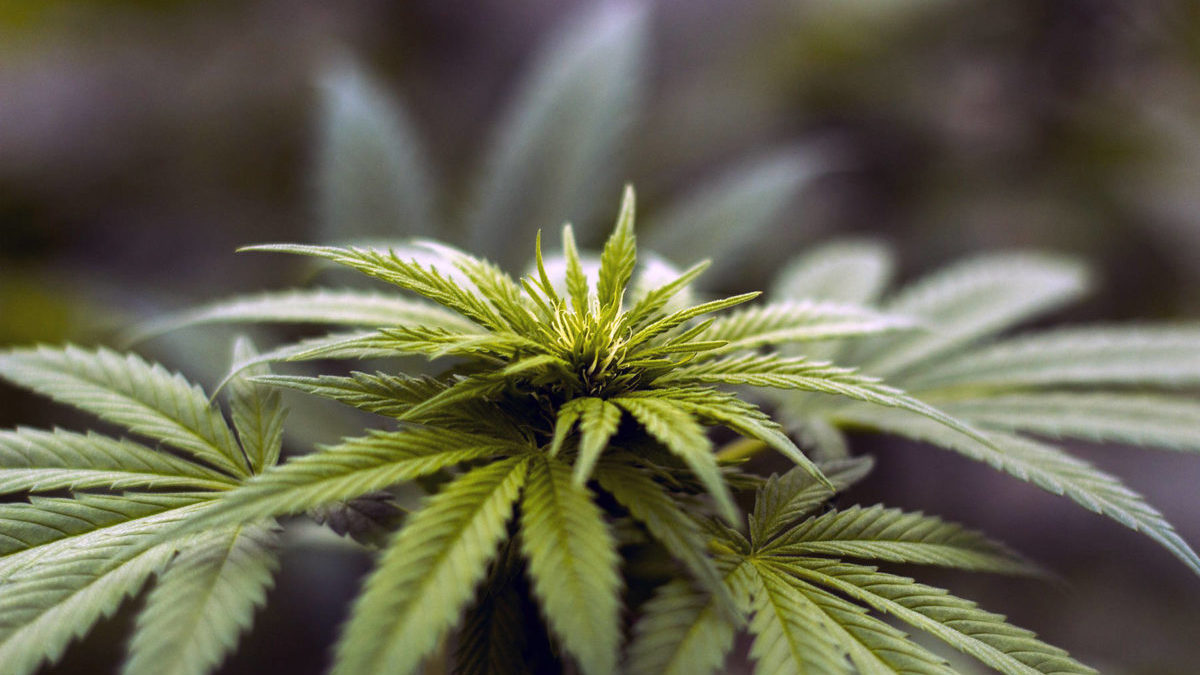




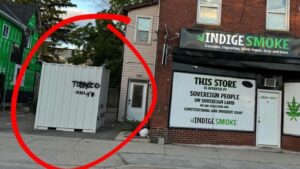
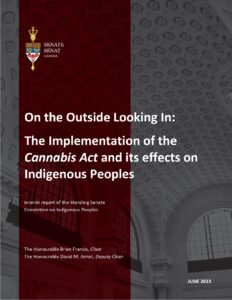
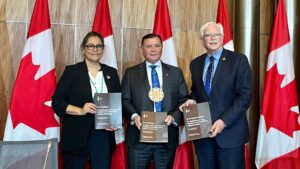
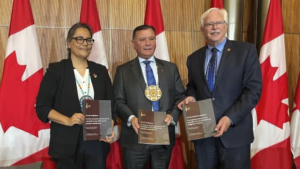
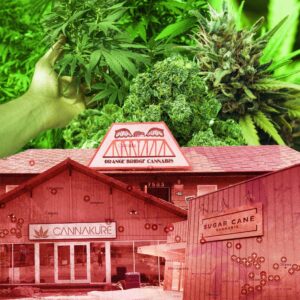
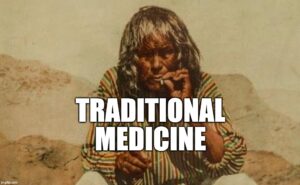
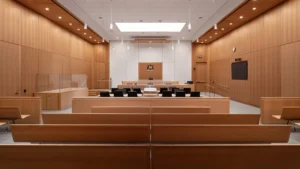


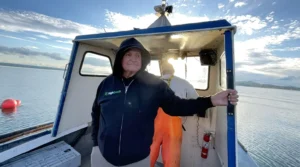
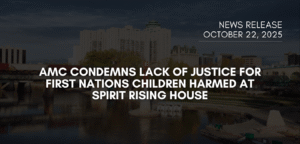
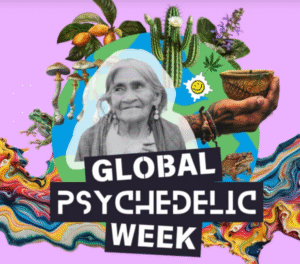
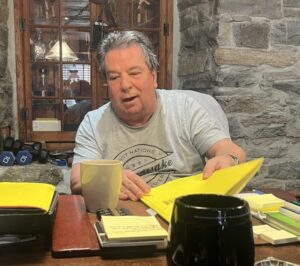

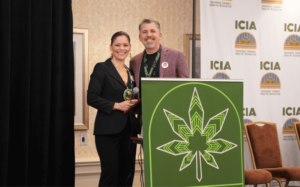
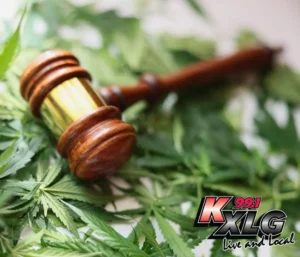

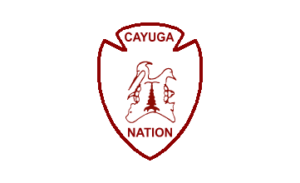

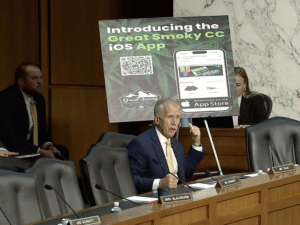


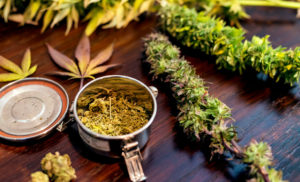

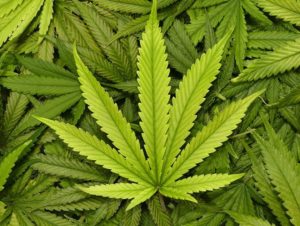
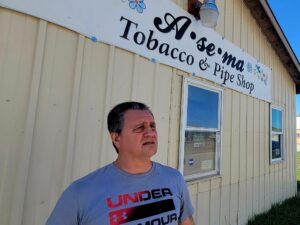
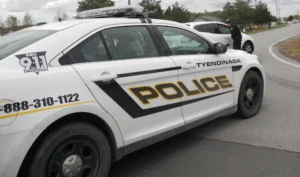
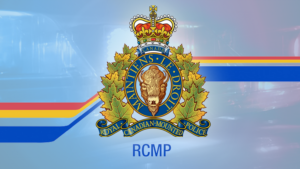
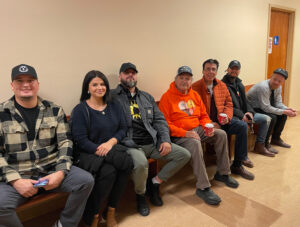
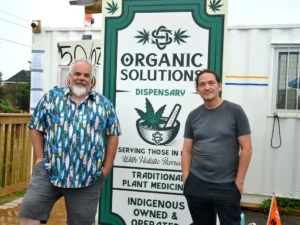
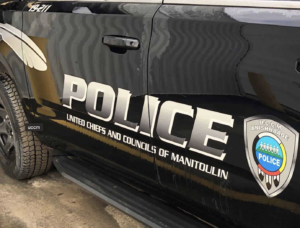




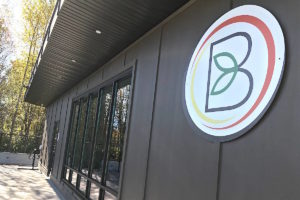





Comments are closed.